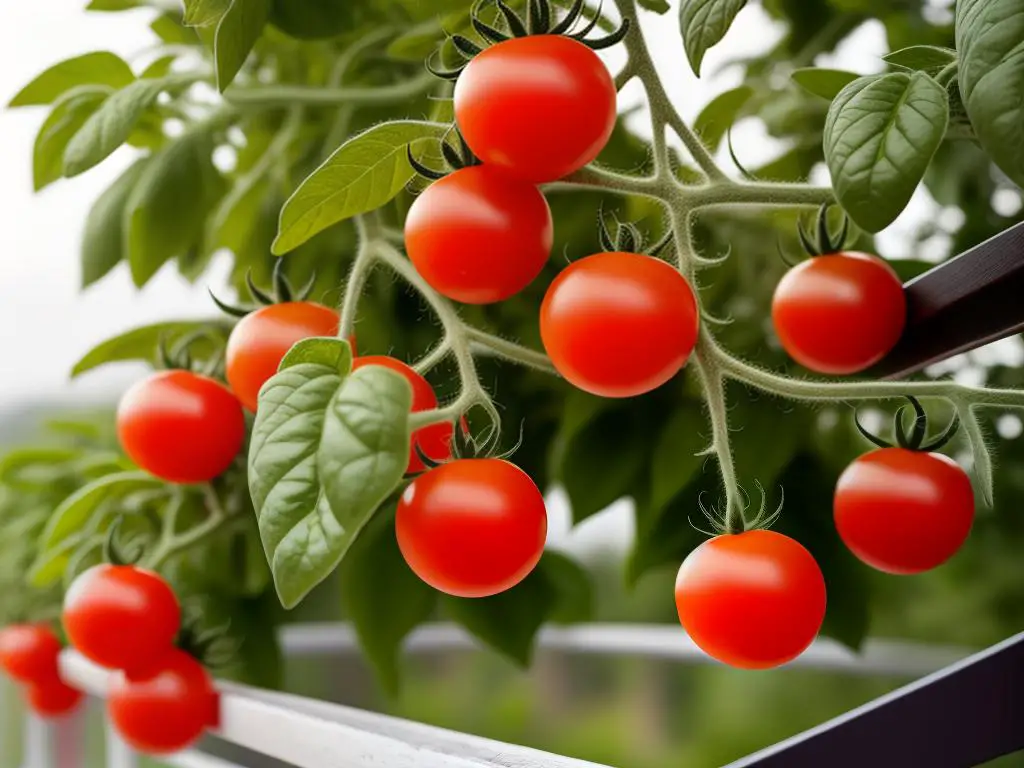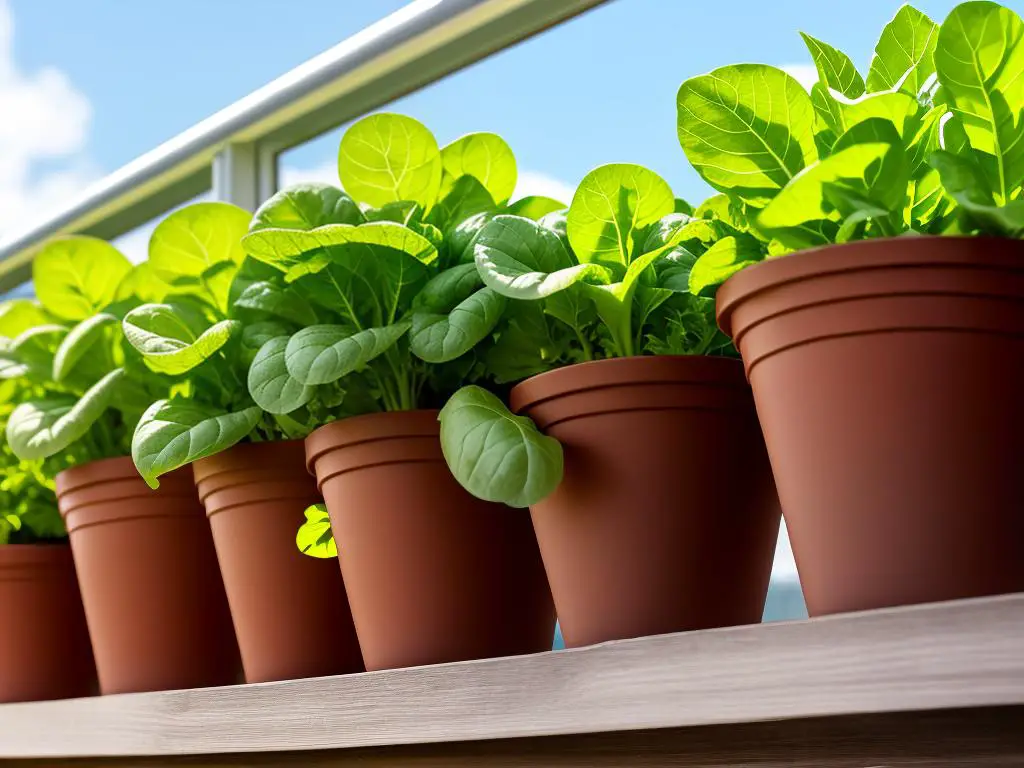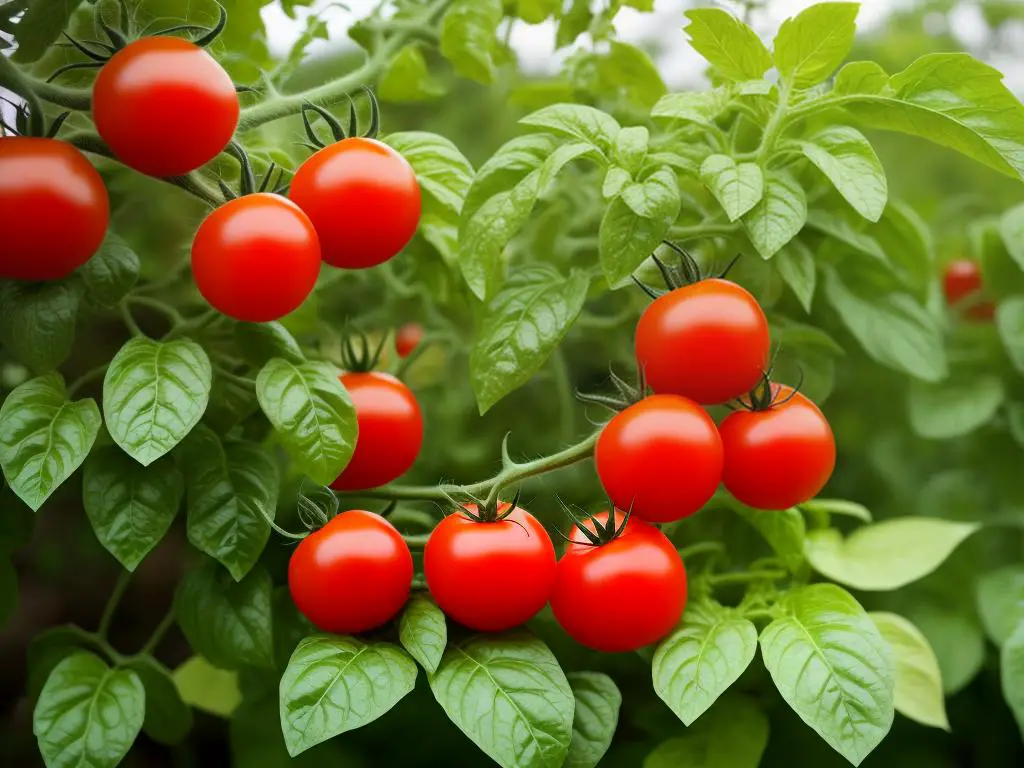You don’t need a sprawling backyard or a green thumb to enjoy the benefits of gardening. In fact, cultivating your own vegetables can be done right on your apartment balcony. Tomatoes, lettuce, and radishes, amongst others, can easily be grown in pots and containers, enabling you to revel in fresh, home-grown produce. Moreover, the pleasure of watching a seed turn into a delicious vegetable and the convenience of having organic veggies right at your disposal is immensely rewarding. This piece will be discussing how to foster these worthy contenders right at your home.
Tomatoes
Tomatoes: A Balcony Gardener’s Delight
Anyone with a love for fresh, homegrown produce knows the joy of plucking a ripe tomato straight off the vine. Now, imagine having that luxury on your own balcony. Tomatoes, filled with delicious sauciness, are among the most popular choices for balcony gardening. This is largely due to their high yield capacity and versatility in a range of dishes. Whether you’re a fan of the large beefsteak tomatoes that are perfect for sandwiches or you prefer the smaller cherry tomatoes to toss in your salads, there is a tomato variety designed to cater to every culinary need.
Sunlight and Watering Needs
Proper care and maintenance of these plants are key to seeing a bountiful harvest. Tomato plants love the sun and require at least 6-8 hours per day of direct sunlight. Make sure your balcony gets adequate light before deciding on planting tomatoes. Equally important is consistent watering, as tomato plants are quite thirsty. However, be careful to keep a balance. Too little water and the plant may dry out; too much could cause the roots to rot.
Choosing the Right Pot
In terms of planting, choose a big enough pot for your tomato plant. A pot that’s about 18 inches in depth and width should suffice. This allows the roots enough room to grow and can hold enough soil to keep the plant supported and balanced. The bigger the pot, the better it is to retain moisture which is essential for your tomato plant’s growth.
Natural Insect Avoidance
Last but not least, managing pests naturally is an important component of balcony gardening. Tomato plants can attract a number of insects, such as aphids and hornworms. Using techniques such as companion planting, where certain plants are grown together to deter pests, or spraying the plant with a mild soap and water solution, can help keep these pests at bay.
Whether your green thumb is seasoned or budding, growing your own tomatoes on your balcony can be a fruitful and satisfying endeavor. Just follow these simple tips and look forward to a plentiful harvest right at your doorstep.

Lettuce
A Perfect Fit for Your Balcony: Lettuce
Whether you’re a seasoned gardener or a newbie urban dweller looking to start a home garden, there’s no better plant to begin with than the humble lettuce. This leafy green powerhouse offers many benefits that make it an excellent candidate for your balcony garden.
For starters, lettuce, like other leafy greens including spinach and kale, doesn’t require massive space or extensive soil depth to grow. A decent size container with efficient drainage is sufficient to grow lettuce. This means you can use either pots, window boxes, or hanging baskets, making it adaptable to whatever space you have available on your balcony.
Light and Water Needs
When it comes to light requirements, lettuce is anything but demanding. It needs only 4-5 hours of sunlight each day, which is easily achievable even on a balcony that only gets morning or late afternoon sun. Although it’s important to remember that lettuce, like many plants, needs to avoid direct harsh sunlight that can wither the leaves and stunt growth.
Continuous Harvest
One of the most rewarding qualities of lettuce is its continual yield. Unlike some plants which require you to wait for a single, large harvest, lettuce allows you to pick and enjoy leaves continually for quite a long period. As long as you harvest the outer leaves, the plant continues to produce new leaves from the center, providing a constantly renewable source of fresh produce for your salads or sandwiches.
Though lettuce is available and cheap in most supermarkets, the taste of homegrown lettuce picked fresh from your balcony garden is unparalleled. Plus, the satisfaction of growing your own produce is an experience worth trying. So, if you’re wondering what is the best fit for your balcony garden, lettuce could be your answer!

Radishes
Why choose Radishes for your Balcony Garden?
Radishes provide novice gardeners with the perfect entry-level vegetable for balcony growing. They’re simple, comparatively low-maintenance, and typically offer a swift and satisfying yield. Going from seed to salad in less than four weeks, radishes make perfect sense if you’re impatient to see results.
Growing Conditions for Radishes
Radishes thrive best in moderately cool conditions. They prefer locations with lots of sun, but can tolerate partial shade. The ideal temperature range for growing is between 50-65°F. Being small and compact, they are a great choice for people with limited space like balcony gardeners.
Choosing Containers for Radishes
When it comes to choosing containers for radishes, the depth of the pot is most important. Radishes need room to expand below the soil’s surface, and the pots should allow that. They should be at least six inches deep for smaller radish varieties, and up to ten inches for larger ones. Window boxes, bucket or trough-style planters are some great options.
Soil and Planting Radishes
Like most root vegetables, radishes require a soil mix that drains well. You can add sand and organic compost to your potting mix to ensure good drainage. When planting seeds, follow the seed packet directions for spacing and depth. Usually it’s best to plant seeds about one inch apart and one-half inch deep.
Watering and Fertilizing Radishes
Watering radishes correctly is crucial. They need evenly moist soil, but not waterlogged soil. Overwatering can cause them to split, while underwatering can make them hard and pithy. As for fertilizers, it’s best to use a low-nitrogen, high-phosphorous mix.
Harvesting Radishes
One of the delights of growing radishes is they signal when they’re ready to harvest. As the radishes mature, the tops of the roots will push above the soil surface. Once you see this happen, you can start harvesting. Remember, the younger they are when you harvest, the more tender and juicy they’ll be!
Pests and Diseases
Despite being a relatively hardy plant, radishes may still attract pests like cabbage root maggots, flea beetles, and aphids. Aphids are normally the biggest problem for balcony gardeners, but they can be easily controlled with a soap water spray.
Rotating your Radishes
Rotating your radishes with other plants helps to prevent diseases and optimize nutrient usage. Try rotating radishes with crops like peas and lettuce, which restore nitrogen to the soil. This ensures your next crop of radishes will have all the nutrients they need to thrive.
Growing radishes on your balcony not only adds a pop of red to your green space, but also brings a dash of self-sufficiency to city living. So give it a try, and you might just be hooked on growing your own produce!

With the aforementioned vegetables, even the most compact balcony can burst out in a profusion of edible greens. An ideal pastime, balcony gardening not only offers a ton of advantages for your wallet and your health, but also serves as a therapeutic respite from urban pressures. So why wait? Get started with your balcony garden, relish in the process and reap the benefits of your harvest. After all, nothing beats the taste of a self-grown, freshly picked tomato, the crunch of a leaf of lettuce or the zing of a well-grown radish.
